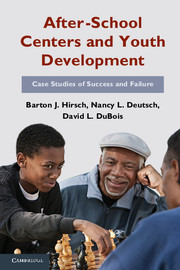Book contents
- Frontmatter
- Contents
- Figure and Tables
- Preface
- Introduction
- Midwest Center
- North River Center
- 6 A Study of Organizational Dysfunction
- 7 Undercutting Tweetie: The Trials and Tribulations of a Youth Leader
- 8 Beyonce: A Good Friend Is Hard to Find (and Keep)
- 9 Putting It All Together: North River and Midwest Centers
- West River Center
- Conclusion
- Appendix Data Sources
- References
- Index
9 - Putting It All Together: North River and Midwest Centers
Published online by Cambridge University Press: 05 June 2012
- Frontmatter
- Contents
- Figure and Tables
- Preface
- Introduction
- Midwest Center
- North River Center
- 6 A Study of Organizational Dysfunction
- 7 Undercutting Tweetie: The Trials and Tribulations of a Youth Leader
- 8 Beyonce: A Good Friend Is Hard to Find (and Keep)
- 9 Putting It All Together: North River and Midwest Centers
- West River Center
- Conclusion
- Appendix Data Sources
- References
- Index
Summary
As we did with the Midwest center, we will now take a look back at the overarching themes and lessons learned from our three studies of North River. Whereas each case and the organizational-level study are informative on their own, our goal in this chapter is to present a more complex analysis that synthesizes and expands on important concepts not only from within North River, but also from within Midwest.
North River had many areas of failure. One of the notable differences between Pocahontas and Bill, the youth presented from Midwest, and Tweetie and Beyonce, the youth presented from North River, was the inability of either Tweetie or Beyonce to find a complete PARC in which she was truly engaged. A complete PARC features three components: 1) a program or activity, 2) a relationship, and 3) a cultural dimension. The benefit of a PARC is that the whole can be greater than any of its parts. In other words, although a strong relationship with a staff person is important, the overall PARC will be stronger and likely have more benefits when that relationship is in the context of an engaging program/activity and supported by a culture that promotes youth development. At Midwest, we saw how complete positive PARCs provided Pocahontas and Bill with developmental supports beyond that which they would have received with one or two of the components alone. In the case of North River, in the absence of any complete PARC, neither girl reaped such benefits.
- Type
- Chapter
- Information
- After-School Centers and Youth DevelopmentCase Studies of Success and Failure, pp. 208 - 214Publisher: Cambridge University PressPrint publication year: 2011

